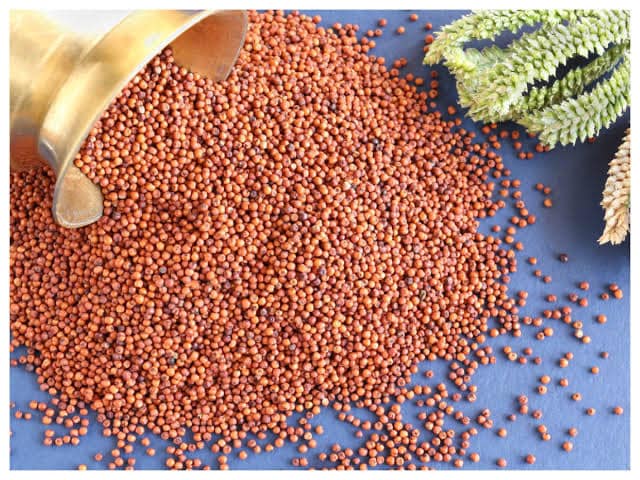
Goa has its own bond with nachni or ragi as is called in English which is one of the millets. Millets are gaining importance as health foods and are recommended for the diabetics and the haemophiliacs alike. Celebrating the importance of millets, especially nachni, the Haemophilia Society of Goa together with the Directorate of Agriculture, recently celebrated Nachneachem Fest in Goa to celebrate the millets through exhibition, food, song and dance as a part of the ‘International Year of Millets 2023’ celebrations.
Finger millet (Eleusine coracana L Gaertn) of the same cereal family Poaceae, as rice and wheat, is a major food crop of the semi-arid tropics of Asia and Africa. Known locally as ragi or nachni, it was the second most important staple food in Goa before the advent of the wheat-based pao during the colonial era. It can be grown throughout the year with minimal soil moisture provided the temperature is above 15 degrees Celsius. It has adapted to grow from sea level to an altitude of 3000 metres above MSL although, finger millet is essentially a warm season crop. It is one of the important food crops and largely grown in Southern States of India, especially Karnataka and the new state of Telangana, formerly a part of Andhra Pradesh.
Hybridization in finger millet began in 1951 when contact method of crossing in ragi was established. Five new high yielding varieties – Aruna, Poorna, Udaya, Annapurna and Cauvery were created by hybridization and the yield potential increased by 50 %. These varieties became popular and replaced the local varieties to a large extent in the cultivated areas.
The undisputed leader of finger millet is Lakshmanaiah, a senior alumnus of my alma mater, University of Agricultural Sciences, Bengaluru, that awarded him an honorary a PhD. The university also installed a bust in his honour at the GKVK campus. Dr CH Lakshmanaiah started hybridization by crossing Indian varieties with African ecotypes to produce new hybrids from 1964, the very first year that the College of Agriculture, Hebbal-Bangalore, was elevated as the first and only State Agriculture University till the end of 1980s in Karnataka. The germplasm was screened to identify African donor parents such as IE-927, IE-929, IE-980R, IE-810 and IE-902 over a period of eight years. The local finger millet varieties such as Hallubele, Annapurna, Purna, Cauvery, Shakti, and Hamsa were crossed with these identified African strains to produce sixteen Indo-African varieties that were designated as ‘INDAF’ varieties. These hybrids were suitable for cultivation throughout the year in both irrigated and rain-fed fields. Some of these varieties had good yield response to irrigation and were ideal for post monsoon cultivation.
The first of the Dr C H Lakshmanaiah series of Indo-African hybrids was Indaf-1, a cross between Hullubele x IE 929 that was released in 1976. It had crop duration of 120-125 days and an average yield of 36-38 quintals (3.6 to 3.8 tonnes) during Kharif season. It was suitable for irrigated fields in addition to the normal rain-fed cultivation. The same parents Hullubele and IE 929 produced siblings Indaf-8 and Indaf-10 in 1982 and 1985 with higher yield potential of 4.0 to 5.0 tonnes grain with the same crop duration of four months or 120-125 days.
The local Cauvery variety produced the best hybrids with Indaf-5 in 1976 yielding 4.5 tonnes grain in just 105 days, suitable for late sowing in case of delay in monsoons as happened this year in Goa. The GPU 28 , a hybrid of Indaf-5 x IE1012, introduced in Goa for cultivation last year is an 1998 release that is improvement over the Indaf-5 of Dr Lakshmaniah, the ‘Father of Ragi breeding’. It yields about 15% more grain when grown under the same conditions of rainfall and management. The GPU 28 variety is of 110 days duration and very suitable for growing in Goa. It has farmer acceptability as a profitable crop and consumer acceptability as a good grain for bhakri, chapati as well as for traditional Goan dishes like ambil and tizan.
The critical stages of growth are boot-leaf, i.e. when the stem swells before the ear-head emerges out; the flowering stage; the grain-filling stage and the grain-maturing stage. There should not be water stress during these stages but there should not be heavy rain at flowering and ripening stages. In case of delay in monsoon, the ML-365, a hybrid of IE1012 x Indaf-5 released in 2008 has 105 days duration and performs better than GPU-28. This variety has also been introduced in Goa for use if the rainfall pattern demands such a shift. Thanks to the initiative of Rena Menezes during the short stint she was in charge of the crops section, Goa is future ready in the International Year of Millets 2023. The rain has started in earnest. It is the time to sow nachni in Goa.
(The writer is the mentor of the GenNext organic farmers and agro-entrepreneurs)